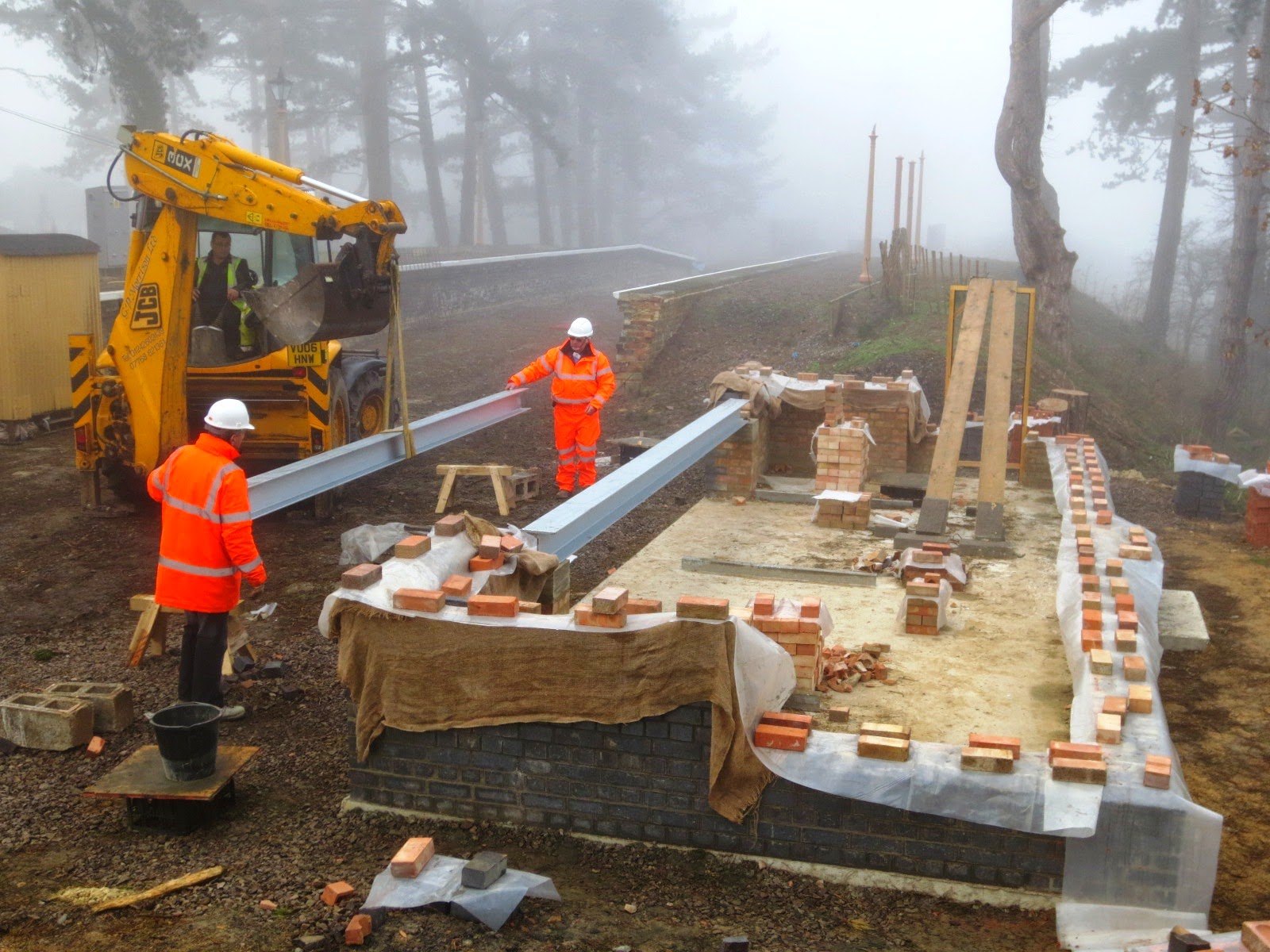 The work continued today on Platform 1C with the pouring of the concrete foundation. This is always a long hard slog, raking and levelling 33 cuM of concrete is no fun! But the job got done. A brilliant effort from from Steve Warren, Adam and Jo.
The work continued today on Platform 1C with the pouring of the concrete foundation. This is always a long hard slog, raking and levelling 33 cuM of concrete is no fun! But the job got done. A brilliant effort from from Steve Warren, Adam and Jo.A Jo Ro- Video
http://youtu.be/sXHjAoEEDmc

In between pours of concrete, more of the old concrete rubble was shifted down to the car park.
After lunch, ballast was brought up to continue the infill behind Platform 2B. That work continues tomorrow.
The start of the day saw the two steel beams moved into position on the pad stones on the front wall of the signal box. Here Roger B and JC( in a shiny new suit) steer the beams into position.

Don't they look impressive (the beams!)


4 comments:
Ever so much more info.
http://en.wikipedia.org/wiki/Slump_test
Will platform two get extended to be the same length as platform one?
Thanks,
Nigel
Hi Nigel,
The plan is to add a 2C at some point.....
I don't think you have the additive comment quite right.
Concrete consists of coarse aggregate, fine aggregate (sand), cement and water. The strength of the concrete is a function of the quality of aggregate, the cement content and the water content. Generally, the important ratio in determining the compressive strength of the concrete is the water:cement (W:C) ratio. The water content is determined by the workability required - as measured by the slump. The higher the slump, the more water and, hence, the more cement required for a given strength. Cement is the most expensive material in the mix.
The additive is likely to have been a plasticiser, which is used to reduce the volume of water needed. The less water required, the less cement needed to maintain the W:C ratio - therefore, the cost of the cubic metre of concrete should be less.
Hope this helps.
Post a Comment